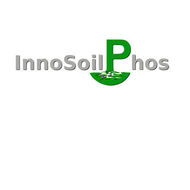Loss of subsurface particulate and truly dissolved phosphorus during various flow conditions along a tile drain–ditch–brook continuum (2023.0)
Siebers N., Kruse J., Jia Y., Lennartz B., Koch S.
Science of The Total Environment, 866 (), 161439
doi:10.1016/j.scitotenv.2023.161439
Abstract
Subsurface losses of colloidal and truly dissolved phosphorus (P) from arable land can cause ecological damage to surface water. To gain deeper knowledge about subsurface particulate P transport from inland sources to brooks, we studied an artificially drained lowland catchment (1550 ha) in north-eastern Germany. We took daily samples during the winter discharge period 2019/2020 at different locations, i.e., a drain outlet, ditch, and brook, and analyzed them for total P (TPunfiltered), particulate P >750 nm (TP>750 nm), colloidal P (TPcolloids), and truly dissolved P (truly DP) during baseflow conditions and high flow events. The majority of TPunfiltered in the tile drain, ditch, and brook was formed by TP>750 nm (54 to 59 %), followed by truly DP (34 to 38 %) and a small contribution of TPcolloids (5 to 6 %). During flow events, 63 to 66 % of TPunfiltered was present as particulate P (TP>750 nm + TPcolloids), whereas during baseflow the figure was 97 to 99 %; thus, truly DP was almost negligible (1 to 3 % of TPunfiltered) during baseflow. We also found that colloids transported in the water samples have their origin in the water-extractable nanocolloids (0.66 to 20 nm) within the C horizon, which are mainly composed of clay minerals. Along the flow path there is an agglomeration of P-bearing nanocolloids from the soil, with an increasing importance of iron(III) (hydr)oxides over clay particles. Event flow facilitated the transport of greater amounts of larger particles (>750 nm) through the soil matrix. However, the discharge did not exhaust colloid mobilization and colloidal P was exported through the tile-drainage system during the complete runoff period, even under baseflow conditions. Therefore, it is essential that the impact of rainfall intensity and pattern on particulate P discharge be considered more closely so that drainage management can be adjusted to achieve a reduced P export from agricultural land.
